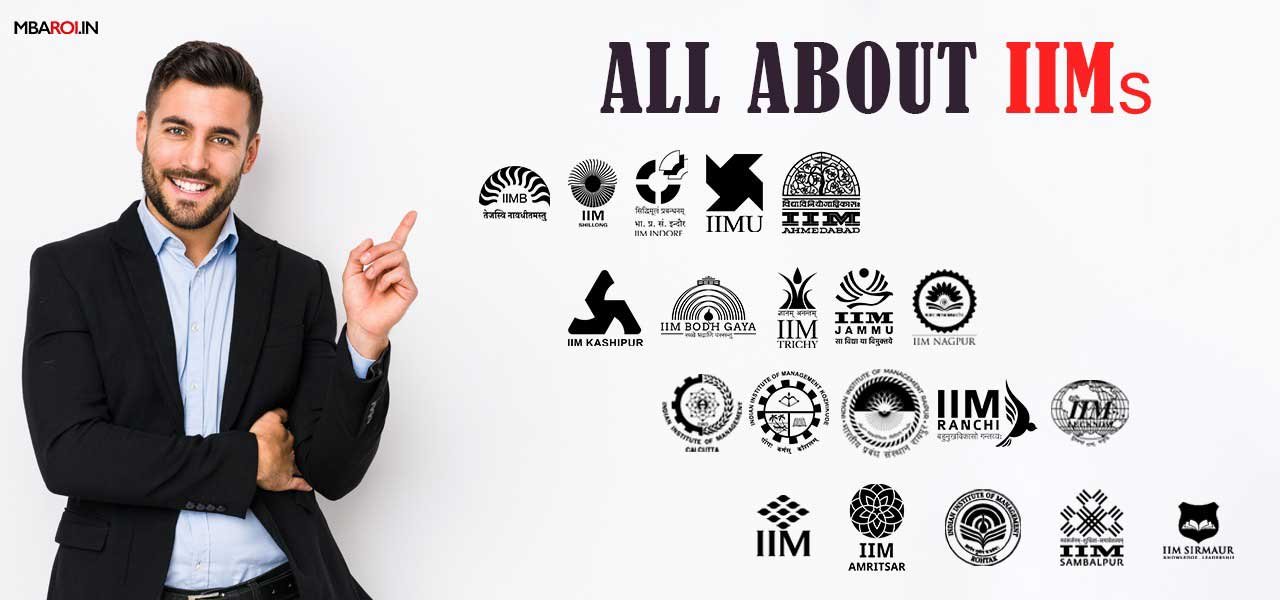Complete Information about IIM

Indian Institutes of Management (IIMs)
The Indian Institutes of Management or IIMs are formed under the control of Ministry of Education, Government of India for postgraduate, doctoral and executive programs in business administration. This was a project initiated by Jawaharlal Nehru, the first Prime Minister of India, after the recommendations from Planning Commission of India.
Highlights
- Ministry of Human Resource Development (MHRD) declared the IIMs as the institutes of National importance and with this, the IIMs gained more autonomy in handling their operations. They achieved leeway to make decisions on their courses, fees etc.
- IIMs like IIM Ahmedabad, IIM Bangalore and IIM Calcutta are among the top 10 management schools of India and are ranked high globally also.
- PGP is the flagship programme across IIMs which is equivalent to an MBA program. After 2017, most IIMs started offering Master in Business Administration (MBA) degrees instead of diplomas. IIMs offer a two-year Post Graduate Programme in Management and one-year global MBA (EPGP, PGPEX, PGPX,PGP-BL, IPMX).
- The IIMs are the top-ranked management institutes as per many rankings and surveys. They attract the highest-paying placement opportunities for its students, in the corporate and government sectors
- IIMs offer the one year MBA as a full-time programme that follows the global MBA norms. A few IIMs also offer a two-year part time executive MBA for graduates who have more work experience.
- IIMs only offered diplomas earlier, after IIM Act 2017 was passed, all IIMs started offering Master of Business Administration (MBA) degree.
Establishment of IIM
IIM Calcutta and Ahmedabad are the oldest and were established in 1961. Between 1973 and 1996, IIM Bangalore, Lucknow, Kozhikode, Indore were added to the list. Later, during 2007 and 2016, 14 IIMs were founded and now there are total 20 IIMs in India. Here is the list of IIMs with their year of establishment:
List of IIMs
Here is the list of all 20 Indian Institutes of Management (IIMs). If the best management program is what is in your cards, then head to one of these 20 IIMs. IIMs are classified into three categories based on their year of establishment:
- First generation IIMs /Old IIMs
- Second generation IIMs/ New IIMs
- Third generation IIMs / Baby IIMs
Programs Offered by the IIMs
The IIMs offer postgraduate, executive programmes and doctoral programmes. The courses offered are:
- PGP or MBA: This is a two-year Post Graduate Programme in Management.
- EPGP: The Executive Post Graduate Programme is for mid-level professionals with a few years of work experience.
- IPM: Integrated Programme in Management is five-year course after class 12, offered by IIM Indore, IIM Rohtak, IIM Ranchi, IIM Bodh Gaya and IIM Jammu.
- PGPX: This is a one-year post-graduate diploma programme for graduates who have work experience.
- FPM: Fellow Programme in Management is a doctoral programme equivalent to a PhD globally.
- Certificate Executive Programmes: IIMs also have short-duration and part-time executive education/EMBA courses.
Admission Process at IIMs
All the programs of IIMs have different admission processes. Getting selected into an Indian Institute of Management is not easy. Each year more than 2 lakh students appear for the CAT entrance exam and there are only about 5000 seats available in all the IIMs together. Admissions to Indian students are offered through a Common Admission Test (CAT) for the PGP courses. CAT is the most competitive exam of the country. International applicants can use their GMAT scores for the purpose of application for admissions in IIMs.
Success rate for admissions to IIMs is only one in two hundred. Even with the new addition of IIMs, the acceptance rate remains around 1.714%, which is very low.
The scores of CAT exams are the basis for primary short-listing of candidates for IIMs.
GMAT scores can also be used for admission to some EPGP courses, one-year programme for experienced executives. The IIM Lucknow also accepts GRE scores and IIM Kozhikode accepts CAT, GMAT, GRE, UGC and JRF exam scores as well.
For doctoral programmes, candidates are required to make presentation of their research idea or give Research Aptitude Test/RAT
The second round includes interview rounds in form of WAT/GD/PI (Written Ability Test, Group Discussions and Personal Interviews), for which the aspirants receive a call letter from the IIMs where they have scored the required cut-off marks. A candidates’ CAT scores remain valid for only 1 year.
Also Read:
How To Prepare for WAT-PI for Top IIMs
Profiles of candidates in terms of past academics and professional accomplishments also form an important part of selection criteria. Some IIMs may also conduct evaluations like written assessment tests.
There is a reservation quota for Scheduled Castes, Scheduled Tribes and Other Backward Classes. Cut-off for reserved-category is lower than cut-off for general-category candidates.
IIM Fees and the Seats Available
All the IIMs had a total of 5100 plus seats in the year 2020. Below is the breakdown of the total number of seats and the fees of the 20 IIMs.
To Sum Up
IIM is an unmatched brand for management education in India. The quality of education and its ranking at the world level, makes it a dream for every MBA aspirant. The lesser number of seats make it difficult for even the candidates with good scores to get admissions into Indian Institutes of Management (IIMs). However, if one does not qualify to get admission into IIM, there are many top business schools in India that are well known globally. Consider them for admissions, but try hard for your chance of admission into an IIM. CAT is the only exam to get into IIM, so visit the official CAT website for more updates.














